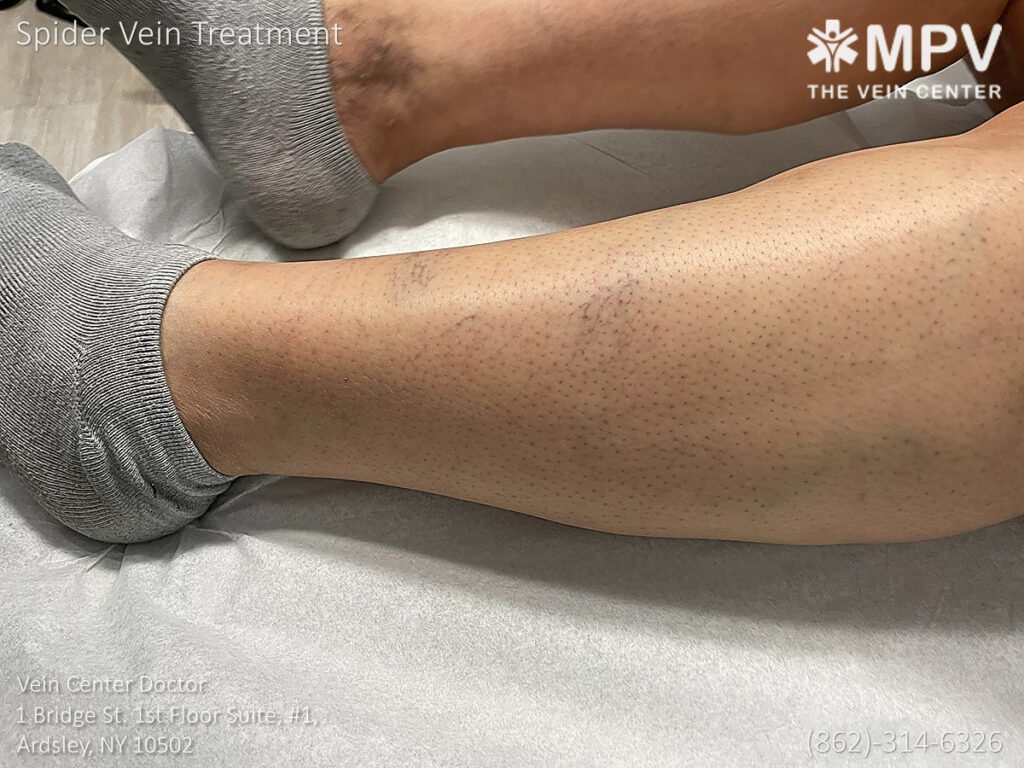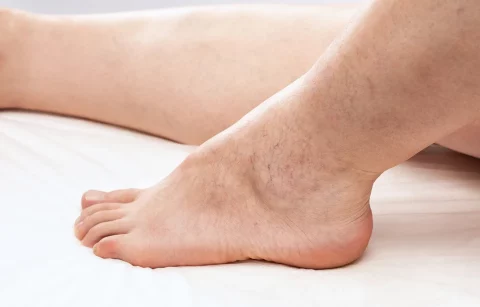Discover how laser spider vein reduction can effectively treat unsightly veins on your face and body. Learn about the procedure, recovery, and what to expect.
Spider veins can be a source of discomfort and self-consciousness for many people. These small, visible blood vessels often appear on the face and legs, causing cosmetic concerns.
Fortunately, laser spider vein reduction offers an effective, minimally invasive solution. In this comprehensive guide, we’ll explore everything you need to know about this popular treatment.
What Are Spider Veins?
Before diving into the treatment, it’s essential to understand what spider veins are and why they occur.
Definition and Appearance
Spider veins, also known as telangiectasias, are small, dilated blood vessels that appear close to the skin’s surface. They often resemble a spider’s web or tree branches, hence the name. These veins can be red, blue, or purple in color and are typically visible on the legs, face, and other areas of the body.
Causes of Spider Veins
Several factors can contribute to the development of spider veins:
- Age: As we get older, our veins may become less efficient, leading to the appearance of spider veins.
- Genetics: Family history can play a role in your likelihood of developing spider veins.
- Hormonal changes: Pregnancy, menopause, and hormonal medications can increase the risk.
- Sun exposure: Excessive sun exposure can cause spider veins, especially on the face.
- Obesity: Excess weight puts additional pressure on the veins.
- Prolonged standing or sitting: This can affect blood circulation, particularly in the legs.
Understanding Laser Spider Vein Reduction

Laser spider vein reduction is a popular and effective treatment for removing or reducing the appearance of these unsightly veins.
How Laser Treatment Works
During laser spider vein reduction, a focused beam of light energy is directed at the affected area. The light is absorbed by the blood within the visible vein, causing it to heat up. This heat damages the vein walls, eventually causing them to collapse and be reabsorbed by the body.
Types of Lasers Used
Different types of lasers can be used for spider vein reduction, depending on the size and location of the veins:
- Nd:YAG lasers: Often used for larger veins and darker skin types.
- Pulsed-dye lasers: Commonly used for smaller, superficial veins and redness.
- KTP lasers: Effective for treating facial veins.
Areas That Can Be Treated
Laser spider vein reduction can be used to treat various areas of the body, including:
- Face
- Legs
- Chest
- Hands
- Ankles
The Laser Spider Vein Reduction Procedure
Understanding what to expect during the procedure can help alleviate any concerns you may have.
Before the Treatment
Prior to the procedure, you’ll have a consultation with a healthcare professional. They will:
- Assess your medical history
- Examine the area to be treated
- Discuss your expectations and potential outcomes
- Provide pre-treatment instructions
During the Procedure
The laser spider vein reduction procedure is typically performed in a doctor’s office or medical spa. Here’s what you can expect:
- The treatment area will be cleaned and may be marked.
- You’ll be given protective eyewear to shield your eyes from the laser.
- A handheld device will be used to deliver the laser energy to the targeted veins.
- You may feel a slight stinging or snapping sensation as the laser is applied.
- The procedure usually takes 15-30 minutes, depending on the size of the area being treated.
After the Treatment
Immediately following the procedure:
- The treated area may appear red or swollen.
- You may experience some mild discomfort.
- You’ll be able to return to normal activities right away in most cases.
Results and Recovery
Understanding the recovery process and expected results can help you set realistic expectations.
What to Expect During Recovery
Recovery from laser spider vein reduction is typically quick and easy:
- Redness and swelling usually subside within a few days.
- You may be advised to wear compression stockings, especially for leg treatments.
- Avoid sun exposure and use sunscreen on treated areas.
- Follow your doctor’s post-treatment care instructions carefully.
Timeline for Results
Results from laser spider vein reduction are not immediate:
- Treated veins may darken initially before fading.
- Significant improvement is often visible within 2-6 weeks.
- Multiple treatments may be necessary for optimal results.
- Final results can take several months to appear as the body absorbs the treated veins.
Training and Qualifications for Laser Spider Vein Reduction Specialists

When considering laser spider vein reduction, it’s crucial to choose a qualified and well-trained specialist. Understanding the training process and qualifications can help you make an informed decision about your provider.
Educational Background
Laser spider vein reduction specialists typically come from various medical backgrounds, including:
- Dermatologists
- Vascular surgeons
- Plastic surgeons
- Phlebologists (vein specialists)
- Aesthetic nurses or nurse practitioners
These professionals usually have a strong foundation in anatomy, physiology, and skin health.
Specialized Training
Beyond their initial medical education, specialists undergo additional training specific to laser treatments:
- Laser Safety Certification: This is often the first step, ensuring practitioners understand how to safely operate laser devices.
- Hands-on Training: Specialists typically complete practical training courses that cover:
- Different types of laser equipment
- Proper technique for various treatment areas
- Patient assessment and selection
- Managing potential complications
- Manufacturer-specific Training: Many laser device manufacturers offer training programs for their specific equipment.
- Continuing Education: The field of laser treatments is constantly evolving, so ongoing education is crucial. Specialists often attend conferences, workshops, and seminars to stay updated on the latest techniques and technologies.
Certifications and Memberships
While not always required, many specialists pursue additional certifications and professional memberships to demonstrate their expertise:
- American Board of Laser Surgery certification
- Membership in the American Society for Laser Medicine and Surgery (ASLMS)
- Certification from the National Council on Laser Certification (NCLC)
Experience and Expertise
In addition to formal training, a specialist’s experience is crucial. When choosing a provider, consider:
- How long they’ve been performing laser spider vein reduction
- The number of procedures they’ve completed
- Their experience with your specific type of veins or treatment area
- Before-and-after photos of their previous patients
Importance of Choosing a Qualified Specialist
Selecting a well-trained and experienced specialist is vital for several reasons:
- Safety: Proper training reduces the risk of complications and ensures the treatment is performed correctly.
- Efficacy: Experienced specialists can tailor the treatment to your specific needs, maximizing results.
- Customized Care: A knowledgeable provider can determine if laser treatment is the best option for you or if alternative treatments might be more suitable.
- Comprehensive Approach: Well-trained specialists often take a holistic approach, considering factors like underlying vascular health and lifestyle changes to enhance and maintain results.
Questions to Ask Your Potential Provider
When consulting with a laser spider vein reduction specialist, consider asking:
- What is your medical background and specialized training in laser treatments?
- How many laser spider vein reduction procedures have you performed?
- Can you provide before-and-after photos of previous patients?
- What type of laser do you use, and why is it best for my condition?
- Are you certified by any professional laser or vein treatment organizations?
- How do you stay updated on the latest laser treatment techniques?
By understanding the training and qualifications of laser spider vein reduction specialists, you can make an informed decision and choose a provider who will offer safe, effective treatment tailored to your needs.
Comparing Laser Treatment to Other Spider Vein Therapies

While laser treatment is effective, it’s not the only option for spider vein removal. Let’s compare it to other common treatments.
Laser Treatment vs. Sclerotherapy
Sclerotherapy involves injecting a solution directly into the vein, causing it to collapse and fade over time.
Pros of laser treatment:
- Non-invasive (no needles)
- Effective for very small veins and facial veins
- Can treat multiple veins at once
Pros of sclerotherapy:
- Often less expensive
- May be more effective for larger veins
- Can treat a larger area in one session
Laser Treatment vs. Radiofrequency Ablation
Radiofrequency ablation uses heat energy to seal off larger varicose veins.
Pros of laser treatment:
- Better for smaller, superficial veins
- Less downtime
- Can be used on more areas of the body
Pros of radiofrequency ablation:
- More effective for larger, deeper veins
- May provide longer-lasting results for varicose veins
Potential Risks and Side Effects
While laser spider vein reduction is generally safe, it’s important to be aware of potential risks and side effects.
Common side effects include:
- Temporary redness and swelling
- Mild bruising
- Skin discoloration (usually temporary)
- Slight discomfort during and after treatment
Rare but possible risks:
- Scarring
- Burns
- Changes in skin texture
- Infection
Who Is a Good Candidate for Laser Spider Vein Reduction?
Laser treatment can be an excellent option for many people, but it’s not suitable for everyone.
Good candidates typically:
- Have small to medium-sized spider veins
- Are in good overall health
- Have realistic expectations about results
- Are not pregnant or breastfeeding
- Do not have certain medical conditions that affect healing
When to Consider Alternative Treatments
In some cases, your doctor may recommend alternative treatments:
- For very large or deep veins
- If you have a history of blood clots
- If you have certain skin conditions
- If you’re taking medications that could interfere with treatment
Cost and Insurance Considerations
The cost of laser spider vein reduction can vary widely depending on several factors:
- Size of the treatment area
- Number of sessions required
- Geographic location
- Provider’s experience and expertise
Insurance typically doesn’t cover spider vein treatment when it’s considered cosmetic. However, if the veins are causing medical issues, your insurance may provide coverage. Always check with your insurance provider and discuss payment options with your healthcare provider.
Maintaining Results and Preventing New Spider Veins

After undergoing laser spider vein reduction, you’ll want to maintain your results and prevent new spider veins from forming.
Tips for maintaining results:
- Wear sunscreen daily, especially on treated areas
- Exercise regularly to improve circulation
- Maintain a healthy weight
- Avoid prolonged standing or sitting
- Wear compression stockings if recommended by your doctor
- Stay hydrated
Conclusion
Laser spider vein reduction offers an effective, minimally invasive solution for those looking to improve the appearance of visible veins on their face or body. While the treatment can provide significant improvements, it’s important to have realistic expectations and understand that multiple sessions may be necessary for optimal results.
If you’re considering laser spider vein reduction, consult with a qualified healthcare professional to determine if it’s the right treatment for you. They can assess your individual needs, discuss potential outcomes, and create a personalized treatment plan to help you achieve smoother, clearer skin.
Remember, everyone’s experience with laser spider vein reduction may be different. By staying informed and working closely with your healthcare provider, you can make the best decision for your vascular health.







